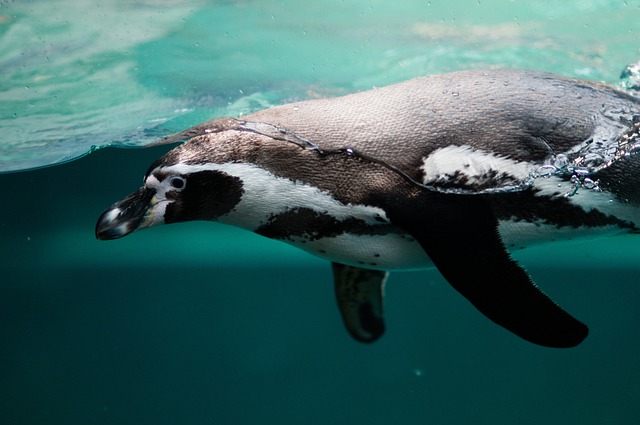Cold water immersion (CWI), below 59°F, accelerates post-exercise recovery by constricting blood vessels, reducing inflammation, flushing metabolic waste, and promoting tissue repair. Combined with compression techniques like compression garments, CWI enhances healing, mobility, performance, and reduces injury risk for athletes. Gradually expose yourself to CWI, up to 10-15 minutes, and combine it with strategic ice packs for targeted discomfort relief and improved recovery.
“Unleash your body’s healing potential with a powerful combination: cold water immersion and compression therapy. This innovative approach has taken the sports and fitness world by storm, offering an effective path to enhanced recovery. In this article, we explore the science behind these techniques and provide practical insights.
From understanding the benefits of cold water immersion to discovering how compression accelerates healing, you’ll gain valuable knowledge. We delve into the scientific evidence supporting combined therapy and offer tips to seamlessly integrate these practices into your post-workout routine.”
Understanding Cold Water Immersion for Recovery
Cold water immersion, often facilitated through cold therapy pools or ice baths, has gained popularity as an effective recovery strategy among athletes and fitness enthusiasts. This technique involves submerging oneself in cold water, typically below 59°F (15°C), for a specified period after intense exercise. The process sparks a cascade of physiological responses designed to reduce inflammation, alleviate muscle soreness, and speed up the healing process.
During cold water immersion for recovery, blood vessels constrict, minimizing blood flow to damaged tissues while increasing circulation in healthier areas. This redirects resources to repair sites, promoting faster tissue regeneration. Additionally, cold therapy helps flush out metabolic waste products that accumulate during exercise, reducing muscle stiffness and improving overall mobility. By combining these effects with compression, whether through specialized gear or simple tight clothing, the benefits are amplified, offering a powerful tool for enhanced recovery routines.
The Role of Compression in Accelerating Healing
Cold water immersion for recovery has gained popularity as a powerful tool for athletes and active individuals seeking enhanced performance and accelerated healing. One critical component of this process is compression, which plays a pivotal role in optimizing the benefits of cold therapy. When combined, these two techniques create an effective synergistic effect, significantly aiding in post-workout recovery.
Compression helps reduce inflammation by promoting blood flow to damaged muscles and tissues. This increased circulation delivers essential nutrients and oxygen, stimulating the healing process. Additionally, compression can minimize muscle soreness and delay the onset of fatigue, allowing for quicker and more efficient rehabilitation. By combining this with the anti-inflammatory effects of cold water immersion, individuals can experience faster recovery times, improved performance, and reduced risk of future injuries.
Scientific Evidence Behind Combined Therapy
The combination of cold therapy and compression has gained significant attention in the sports science and rehabilitation fields due to its promising effects on enhanced recovery. This therapeutic approach, often involving techniques like cold water immersion (CWI) and compression garments, has been backed by a growing body of scientific evidence. Numerous studies have explored the physiological responses and benefits of these methods, revealing their potential to reduce muscle soreness, inflammation, and oxidative stress post-exercise or injury.
Research suggests that immersing oneself in cold water, such as through CWI, can stimulate a range of adaptive responses in the body. These include decreased blood flow to affected areas, which helps reduce swelling and pain, while also promoting increased blood flow to working muscles upon emergence from the cold. Compression garments, on the other hand, provide mechanical compression that aids in removing metabolic waste products and improving recovery. Together, these modalities create a powerful synergy, accelerating the body’s natural healing processes and optimizing athletes’ performance and overall well-being.
Practical Tips for Integrating Cold and Compression Techniques
When integrating cold therapy with compression for enhanced recovery, start with gradual exposure. Begin with shorter durations in cold water immersion, such as 10-15 minutes, and gradually increase time as comfort allows. This approach ensures your body adapts safely to the extreme temperatures.
For optimal results, combine cold water immersion with compression garments. Wear these during or immediately after immersive sessions to enhance blood flow and reduce swelling. Ensure proper fit for maximum effectiveness; the garments should be snug but not restrictive. Additionally, consider using ice packs strategically to target specific areas of discomfort or inflammation, further aiding in recovery and pain management.
Combining cold water immersion and compression therapy emerges as a powerful duo for accelerated recovery. By understanding the individual benefits of each technique and leveraging scientific evidence, athletes and individuals can enhance their post-exercise restoration. Integrating these methods into your routine may significantly improve performance, reduce muscle soreness, and speed up the healing process. So, take a dive into this effective combination—cold water immersion for recovery coupled with compression—to experience optimal physical well-being.
